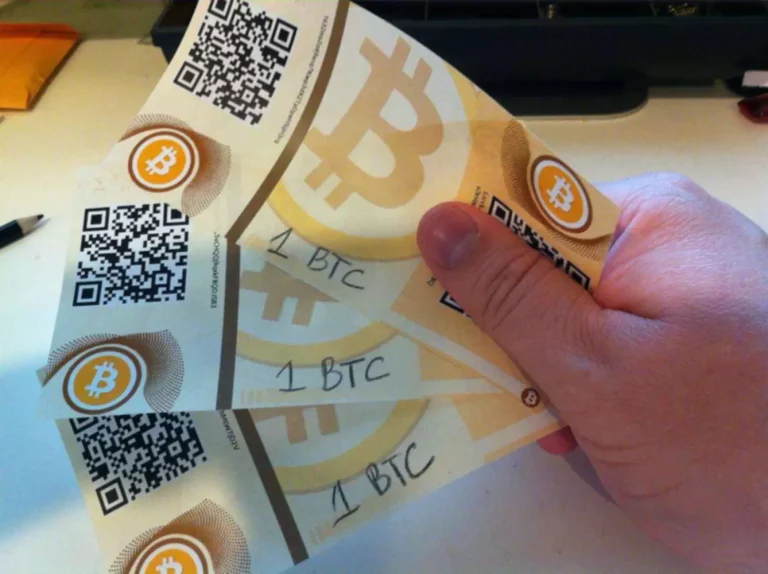A Visible Guide To Blockchain Bridge Security By John Abraham
Blockchain expertise has come a great distance since 2008 when the Bitcoin white paper was published. Since then, an explosion of blockchain networks have been created, with an enormous number of designs and supposed performance. To deploy a dapp on multiple chains, builders can use growth platforms like Alchemy(opens in a model new tab), Hardhat(opens in a new tab), Truffle(opens in a new tab), Moralis(opens in a brand new tab), etc. Typically, these platforms come with composable plugins that can allow dapps to go cross-chain.
Several blockchain bridges, like “Cross-Chain Bridge” and the Synapse Protocol, have diversified methods. They’ve established liquidity swimming pools for a multitude of belongings, such as liquidity swimming pools for WETH on BNB Chain and Polygon. Multiple designs of those bridges exist, however basically they can be categorized into two distinct groups. First, we now have centralized bridges which necessitate trust or federation to function.
Wrapped tokens like WBTC and RenBTC unlocked DeFi alternatives for established assets like Bitcoin. Bridges then developed into worth switch hubs, enabling seamless motion of funds throughout numerous ecosystems. Multichain bridges like Synapse empowered customers to navigate a plethora of chains, maximizing returns and exploring progressive dApps.
What Are The Various Varieties Of Blockchains?
Let’s say you might have ETH on Ethereum Mainnet but need cheaper transaction fees to discover completely different dapps. By bridging your ETH from the Mainnet to an Ethereum L2 rollup, you possibly can enjoy lower transaction fees. There are many different bridges, but we highly advocate to verify critiques and do your personal research on the bridge before sending the bridge your belongings and hoping they get sent back on the secondary network https://www.xcritical.in/. Along with that, this method only works if people maintain trading back and forth. I ran into this drawback once I tried to transfer a few of a stablecoin from Binance Smart Chain to the Polygon network—the Polygon network had no stablecoin to give to me. Now, if you go to deposit your Ethereum Tether, it will get added to the pool, after which the centralized authority will send you an equal quantity of Polygon Tether, which gets taken from the pool.

The first entry among the many types of a blockchain bridge would refer to a trusted blockchain bridge. It is basically a protocol governed underneath a centralized strategy, operator, or entity. Trusted blockchain bridge has earned the name as users have to trust the reputation or identity of a centralized bridge and deposit their funds on the bridge. Some of the examples of trusted blockchain bridges have shown proof of user-friendly interfaces, which may help in encouraging extra customers. For instance, a series anchoring verifiable credentials on Polkadot could be used for KYC (Know Your Customer) necessities by a gaming firm built on Ethereum.
Types Of Blockchain Bridges?
Blockchain networks embody a global group of nodes interacting with different in a shred surroundings for management, validation and storage of monetary transactions and data exchanges. The distinct traits of the blockchain networks separate them from each other and create distinct communities. For instance, each blockchain network includes a consensus model, which is an integral part for ensuring that all nodes can agree on particular transactions. The restriction on interactions between completely different blockchain networks creates limits for decentralization, the core principle of blockchain expertise. A blockchain bridge serves as the best solution for interoperability amongst different types of blockchain networks.

When you go to “bridge” your crypto, your current asset is actually “frozen” via a wise contract. Once your property are frozen, you’re then given a replica of that token on the model new community you want what is a blockchain bridge and how it works to move to. A blockchain bridge is a connection that permits the switch of tokens or knowledge from one chain to a different or the ability to interact with one other chain’s dapps.
Developers from different blockchains proceed to work collectively to create new consumer platforms. The basics of a blockchain bridge clarify the potential in addition to downsides of the brand new solution. You can discover a number of blockchain bridge projects making their method in the path of reputation.
What’s The Want For Blockchain Bridges?
Before transferring tokens, it is strongly recommended to look into a bridge and its security practices. Moreover, supporting and funding innovative research initiatives focused on novel trustless protocols and cryptographic mechanisms can pave the finest way for a more secure future of interoperability. Relays enable blockchain networks to watch transactions and occasions occurring on different chains.
Blockchain bridges work by making a connection between completely different blockchain networks. This connection could be achieved through various methods, such as good contracts, cryptographic algorithms, or specialised protocols. Once the bridge is established, users can transfer assets between blockchains. Trustless bridges operate without an intermediary or trusted third party.
- The maturity and evolution of blockchain know-how have led to the demand for blockchain bridge initiatives to enhance interoperability amongst different blockchain networks.
- As the web3landscape continues to mature, the role of bridges in enabling this interconnected future turns into more and more indispensable.
- Other thrilling features embody secured bridge node service, flexible safety models, and native gas token unwrapping.
- These two chains have their own protocols, rules, communities, and consensus mechanisms and thus, interoperability between them just isn’t attainable.
Protocols as soon as limited to fundraising on Ethereum, like Hyperliquid and dYdX, can now migrate development to their own chains, fostering larger autonomy and tailor-made performance. Bridges seamlessly transfer liquidity between chains, permitting these protocols to integrate new blockchains and broaden their user base while retaining important liquidity pools. It additionally supplies general message bridging for circumstances similar to cross-chain DEX and NFTs.
Using a blockchain bridge as a substitute of a centralized change offers a number of benefits. Bridges enable direct, peer-to-peer transactions between totally different blockchains, decreasing reliance on central intermediaries. The Stargate Bridge (AB) is a LayerZero-based protocol that facilitates the exchange of native belongings between blockchain networks. Users can send native tokens straight to non-native chains with out using an middleman or wrapped token. Stargate is designed to offer immediate assured finality, cross-chain interoperability, and uniform liquidity. However, blockchain bridges enable those same tokens to be processed on different blockchains quicker and at a decrease cost.
Are Blockchain Bridges Thought-about Secure?
The following discussion presents an in depth introduction to a blockchain bridge and its working alongside the worth advantages it presents for the blockchain community. In addition, you can even be taught concerning the risks of a blockchain bridge and examples of tasks. Blockchain bridges, in their essence, are transformative tools designed to seamlessly connect disparate blockchain ecosystems. Their potential in reshaping the decentralized finance area is immense, from cost-saving alternatives to granting entry to diversified dAapp environments. Predominantly, the receiving blockchain may provide a extra cost-friendly and efficient expertise than the originating one.
This is as a result of every community has its personal algorithm and governance mechanisms, because of which their native property and data are incompatible with the opposite blockchain. However, with a bridge between two blockchain networks, it becomes attainable to switch crypto belongings and arbitrary knowledge between them. Thus, bridges are key for interoperability within the ecosystem and we need them to make different blockchain networks suitable with each other. A blockchain bridge connects two separate blockchain networks, allowing them to communicate and trade data and belongings. Blockchain bridges are protocols that facilitate the switch of property and information between different blockchains. They act as intermediaries, navigating the technical and safety complexities of disparate networks to allow the frictionless circulate of value.
An example is Ethereum as an L1 major chain, with Arbitrum as its official L2 facet chain. The top 4 advantages of blockchain bridges embody communication between blockchains, flexibility, effectivity, and scalability. People make use of blockchain bridges to wrap other cryptocurrencies for use on other networks. For example, some devs will use a blockchain bridge to discover different blockchain systems to check out native dApps or to reap the advantages of better rates of interest on different networks. At Blaize, we understand that the world of blockchain is as various as it’s advanced, particularly when it comes to the important area of blockchain bridges. Our expertise on this field ranges from conducting complete safety audits of current bridges to creating custom-designed bridges tailored to our clients’ specific needs and requirements.
This is where bridging will are out there in, it’ll turn cryptocurrencies into extra of a staff sport working all together to make crypto a extra all-around answer to the problems it’s trying to resolve. In other words, main cryptocurrency brokers actually don’t promote native coins, they promote tokens on the Ethereum community. Let’s go over a very simple example as to why you’ll need to use a blockchain bridge. The Ethereum network is obviously built utilizing Ethereum as the main coin, and so on for the other networks.
Why Are Blockchain Bridges Needed?
Web3 games and different initiatives can now port their token throughout multiple chains and cut back community stress. Every blockchain is different and has its advantages and disadvantages. A DApp or protocol can take advantage of every chain’s specific advantages by porting a token cross-chain.
Blockchain bridges play a vital role in expanding the general capability of the decentralized ecosystem. Bridges operate as bypasses, efficiently distributing transaction load across multiple chains. This alleviates pressure on individual networks, boosting throughput and paving the way for broader adoption.